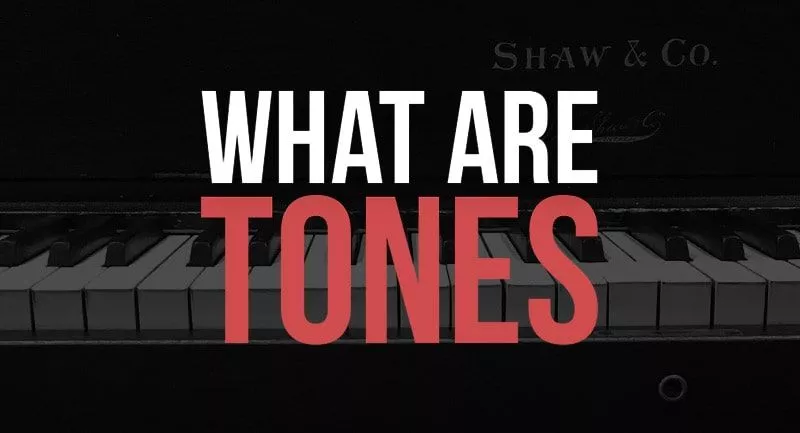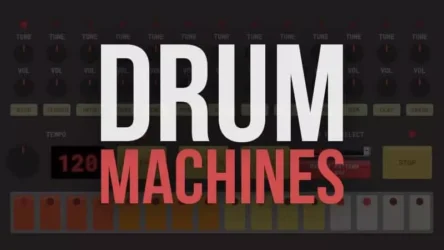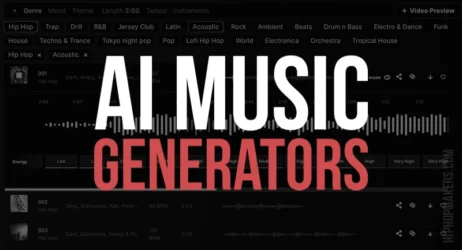This guide will answer what is a tone in music, the types of tones, provide examples, and how to identify the different types of musical tones.
What Is A Tone In Music?
A tone is an element of musical sound that includes the highness, lowness, and quality of a sound. It can be described as a musical pitch without the rhythmic component that consists of the sound’s duration, loudness, and quality.
- What Is A Musical Tone
- What Are Tonal Scales
- Examples of Tones
- What Are The Types of Tones In Music
- How Do You Identify A Musical Tone
- What Is Tone Color In Music
- What Are Examples of Tone Colors
- What Is A Semitone In Music
- Why Is Tone Important In Music
What Is A Tone?
The tone is the most common element in music. It distinguishes one note from another and is frequently described as having different sounds or qualities. A musician will usually play a tonic note, which will then set the tone for a piece of music.

The Significance of Tone in Music
The tone has a significant impact on the overall sound of a piece and often forms part of the unique and identifiable characteristics. It is part of a sound that distinguishes a musical note from another.
The Factors A Tone
Pitch, volume, and duration are the three factors that contribute to the tone of music. These factors may be combined in different ways to create a musical tone and allude to other characteristics.
1. Pitch
The pitch can describe the tone it is played at. This will determine how high or low the sounds make up the piece.
2. Duration
The length of time a tone is played for will determine how long the tone lasts.
3. Volume
The loudness of a tone will determine how powerful the sound makes up the piece.
What Is The Fundamental Tone?
The fundamental tone is the lowest frequency of a harmonic series. It can also be called the first partial, prime tone, or the first vibration. It is also known as the tonic.
Each tone’s relative pitch is determined by its harmonic relationship to the fundamental note in a series of successive tones.
What Is Overtone?
Overtone is the addition of upper partials to the original tone. An overtone is any natural partial except for the fundamental frequency. A real tone has a fundamental frequency, which is perceived as the pitch.
However, a real tone can have many other frequencies in higher quantities over and above the fundamental frequency, and these can be heard as harmonics.
What Are Tonal Scales?
A tonal scale is a musical scale that can compose melodies. The pitches are arranged into scales based on the different tone qualities. There are 12 musical tones, and each tone can be combined with other tones to create different scales.
What Are Examples of Tones In Music?
There are several examples of tones in music, including the individual notes that form part of the composition.
The individual notes that form a piece of music are a great example of tones in music. These tones have different pitches and different durations. The pitches are known as notes and refer to the highness or lowness of the tone, while the durations refer to the length of time each tone is played.
The following songs could be considered examples of tone in music:
1. “Hallelujah” By Leonard Cohen
This song is accompanied by different types of tones from the singers and background instruments. The singers’ voices tend to have a more sustained tone. The sound of the piano is also continued throughout the song and thus creates a smooth tone that varies only a little from note to note.
Instruments such as the drums have a more punctuated tone and create separate tones from each other. For instance, the rhythm of the drums is more prominent than the lead singer’s voice.
2. “Mary Had A Little Lamb” By Stevie Ray
The tone in this song is quite animated, with the frequent sounds of children laughing. It can be said that there are several types of tones in this song.
For example, the tone of the children’s laughter serves as a punctuation to the more sustained tones of Stevie’s voice.
3. “Sing, Sing, Sing” By Benny Goodman
The tone is generally light and lively. The song maintains a sense of rhythm throughout the song and gives it a somewhat consistent tone. However, the tones in the song do not remain constant and keep changing throughout.
The lightness of the tone in the song can be heard in different instruments. For instance, the soloist changes every few measures and brings a new tone to match his vocals.
4. “Twinkle, Twinkle Little Me” By Stevie Wonder
This song is very peaceful in its tone. There is a sense of stability that can be heard throughout the song. The tone in the song is not punctuated or constant, but it can be said that there are different types of tones in this piece.
The song is generally very loud and serious. It begins with an audible tone that slowly decrescendos as the song progresses. There are also several breaks between phrases where the tone suddenly changes to become much lighter and happier.
What Are The Types of Tones In Music?
Tone can be divided into a variety of types. All tones have a quality, volume, and pitch that help to identify them as unique from others.
Tones can be divided into two major groups: “consonant” and “dissonant.”
Consonant Tone
A pleasant sound characterizes consonant tones and includes tones in a major key or its relative minor and triads in a major key.
These tones tend to be uncomplicated in their structure and the pattern of overtones produced.
Dissonant Tone
On the other hand, dissonant tones have an unpleasant sound that often creates tension and includes tones that are not in a major key or its relative minor, as well as triads in the parallel minor.
These tones have a complex structure and often produce overtones that clash together, creating dissonance.
How Do You Identify A Musical Tone?
A tone can be identified by its quality, pitch, volume, and duration. These are the four main factors that contribute to creating the tone of the music. You can use all four factors to identify the tone of a song.
It includes the highness, lowness, and sound color of a musical sound. It is essential to listen carefully and use your common sense when identifying tones in music since it can be challenging.
What Is Tone Color In Music?
The tone color is the particular sound characteristic of a musical instrument. It includes all aspects of tone, including volume, pitch, and duration. It is also called timbre.
A musical instrument’s tone quality is created by how it sounds when it’s played. This includes the volume, pitch, length of the sound, speed of sound, and timbre.
Tone color is what makes an instrument different from another. It is closely linked with the instrument as it is a quality that gives each instrument its unique sound.
What Are Examples of Tone Colors?
The sounds of different instruments produce a variety of possible tone colors. For example, the sound produced by a bassoon is very dull and low in tone color compared to the sound of a trumpet with a bright, clear tone.
In another example, when played, the clarinet emits a buzzing tone, whereas the flute emits a tone that seems to sing in the air.
1. Flute
The sound color of the flute is very light and clear. It can be heard as a familiar voice higher in pitch than the other instruments.
The tone quality of this instrument is very bright and pure. It is a common woodwind instrument with a soft, gentle tone color.
2. Violin
The tone color of the violin is very low, chilling, and dark. It emits a voice that is slightly higher than similar instruments.
The tone quality of this instrument is complex and has a sweet, full sound that is often used as the main voice of an orchestra.
3. French Horn
The tone color of the French Horn is very low and dark. It can be heard as a slightly lower voice than the other instruments.
The tone quality of this instrument is very mellow and sounds smooth and unfocused. It is often used as a background voice in an orchestra.
4. Trumpet
The tone color of the trumpet is very high and bright. It emits a voice that is slightly higher than the other instruments.
The tone quality of this instrument is piercing, with a bright sound that can be heard from far away in music. It is often used as a background voice in an orchestra.
What Is A Semitone In Music?
A semitone is a half-step in pitch and is the smallest interval. It is one of the building blocks of musical scales and intervals. It is the smallest interval used in Western music theory. It spans half an octave and can be described as either a minor second or a major second.
A major second is an interval consisting of two adjacent notes on a scale separated by two semitones. In comparison, a minor second is an interval consisting of two adjacent notes in a scale separated by one semitone.
An interval is the pitch distance between two notes, and it is measured in semitones. Intervals are used to describe scales and chords and the harmonic relationships between pitches.
Why Is Tone Important In Music?
The tone is an important quality in musical composition, and it also helps to contribute to the emotional expression of a piece. The tone of the piece and the way it is composed will play a role in whether or not it can successfully communicate to an audience.
While music may sound good to an audience, it may not communicate what the composer wants to say. Tone can give a person an emotional response, and this is why it plays such a vital role in music.
Summary of Tone in Music
Tones refer to the highness, lowness, and quality (sound color) of a sound. A pitch without the rhythmic component of the sound can be described as “a sound without the duration, loudness, or quality.”.
To wrap up, musical tones make up the sounds we hear in music. These tones can come from different instruments, like a piano or a guitar, and each instrument has its own sound quality. This means that even when two instruments are playing the same pitch, they will sound different. This difference is because of the unique timbre of each instrument.
A musical tone can be a pure tone, like a simple beep, or a complex tone, which is a mix of many sounds. This mix can include harmonic overtones and extra sounds that give each instrument its special sound. For example, if you listen closely, you’ll hear these overtones when a musician is playing specific musical notes.
I hope you now have a good understanding of musical tones and how they apply to music.




